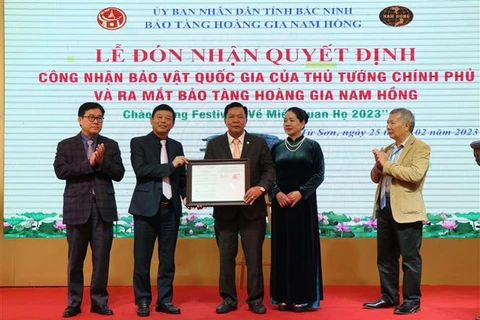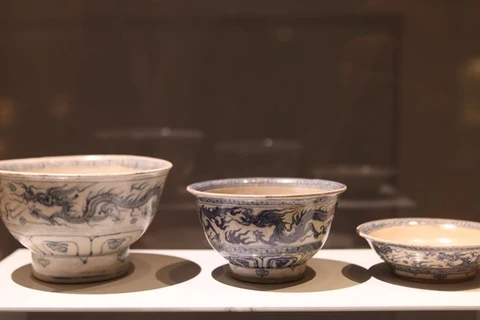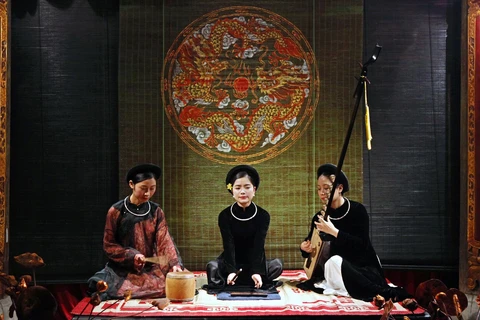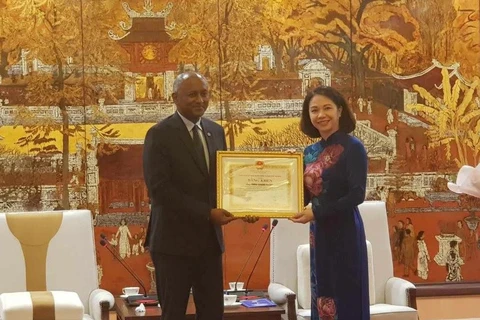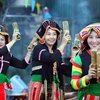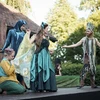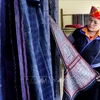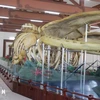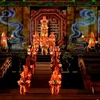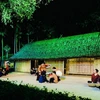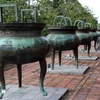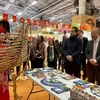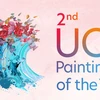 An item in the set of blue-and-white bowls and dishes dating back to the early period (called Le So) of the Hau Le (Latter Le) Dynasty. The set comprises two bowls and five dishes used to be belongings of the royal family in the Thang Long capital, now Hanoi. The set was listed as a national treasure in the 11th recognition phase. (Photo: VietnamPlus)
An item in the set of blue-and-white bowls and dishes dating back to the early period (called Le So) of the Hau Le (Latter Le) Dynasty. The set comprises two bowls and five dishes used to be belongings of the royal family in the Thang Long capital, now Hanoi. The set was listed as a national treasure in the 11th recognition phase. (Photo: VietnamPlus) Hanoi (VNA) – National treasures are objects with special cultural and historic values protected and preserved according to a specific mechanism by the State.
The recognition of national treasures is decided by the Prime Minister based on the verification by the National Cultural Heritage Council.
Since 2012, 11 recognition phases have been conducted with 265 listed as national treasures.
According to the Law on Cultural Heritage, national treasures are bequeathed objects with extremely precious, rare and typical values in terms of history, culture and/or science. They are original and have a unique appearance, with special value related to a significant event of the country or the career of a national hero or an outstanding figure. They also include works of art famous for their ideological, humane, or aesthetic values typical for a trend, a style, or an era. An outstanding invented product that has high practical value and promotes social development in a certain historical period can make this list, as well as natural items demonstrating the formation and development of the earth or nature.
Hanoi is currently home to the biggest number of national treasures with 28 groups of 297 objects.
Preservation and value promotion are important to heritage, and they hold even greater importance to national treasures. Localities and agencies keeping the objects pay special attention to this task so that the treasures can be revealed to the public.
The Thang Long - Ha Noi Heritage Conservation Centre is responsible for nine national treasures, including seven at the Imperial Citadel of Thang Long and two at the Co Loa relic site.
Deputy director of the centre Nguyen Hong Chi said his centre has built a general plan for protecting and bringing into play the value of objects, with special attention to the preservation of items following scientific processes. Each national treasure is given a QR code so as to serve management and value promotion.
Meanwhile, the Hanoi Department of Culture and Sports has invited experts to give guidance in the preservation of the antiquities. It has also asked the localities and agencies in charge of the treasures to build a preservation plan and prioritise funding for the upgrade of heritage protection facilities.
To help the public access national treasures and be further aware of their value, Director of the Hanoi Museum Nguyen Tien Da said the museum plans to apply 3D technology to the national treasures it keeps so as to meet pubic demand and introduce them to foreign visitors.
Other agencies in charge of the nationally important objects are also working to promote these items, including holding regular exhibitions, applying information technology, publishing information on websites, and producing videos to introduce the treasures./.
 A bronze lamp in the shape of a kneeling person dating back to the Dong Son Civilisation, about 2,500 - 2,000 years ago. It was recognised as a national treasure in 2012. (Photo: VietnamPlus)
A bronze lamp in the shape of a kneeling person dating back to the Dong Son Civilisation, about 2,500 - 2,000 years ago. It was recognised as a national treasure in 2012. (Photo: VietnamPlus)  The draft of the “Appeal for the entire nation to wage a resistance war” by President Ho Chi Minh (Photo: VietnamPlus)
The draft of the “Appeal for the entire nation to wage a resistance war” by President Ho Chi Minh (Photo: VietnamPlus)  The bronze bell of Van Ban Pagoda, dating back to the Tran Dynasty (the 13th - 14th centuries), was given the national treasure status in 2013. It is the oldest and also biggest bell from the civilisation of Dai Viet, an old name of Vietnam, that existed from the 10th to the 19th centuries. It is valuable for research of history and culture of the Vietnamese Buddhism and the Tran Dynasty. (Photo: VietnamPlus)
The bronze bell of Van Ban Pagoda, dating back to the Tran Dynasty (the 13th - 14th centuries), was given the national treasure status in 2013. It is the oldest and also biggest bell from the civilisation of Dai Viet, an old name of Vietnam, that existed from the 10th to the 19th centuries. It is valuable for research of history and culture of the Vietnamese Buddhism and the Tran Dynasty. (Photo: VietnamPlus)  The sculpted relief of Lac Long Quan and other legendary figures of the Hung Kings era, kept at the Dinh Noi relic site (Lac Long Quan Temple) in Binh Da hamlet of Binh Minh commune, Hanoi’s Thanh Oai district. It dates back around the late 19th century and the early 20th century. (Photo: VietnamPlus)
The sculpted relief of Lac Long Quan and other legendary figures of the Hung Kings era, kept at the Dinh Noi relic site (Lac Long Quan Temple) in Binh Da hamlet of Binh Minh commune, Hanoi’s Thanh Oai district. It dates back around the late 19th century and the early 20th century. (Photo: VietnamPlus)  A seal with a dragon-shaped handle. This is a unique object symbolising the power of the Nguyen Dynasty and holding special value in the collection of gold seals of the Nguyen Dynasty. (Photo: VietnamPlus)
A seal with a dragon-shaped handle. This is a unique object symbolising the power of the Nguyen Dynasty and holding special value in the collection of gold seals of the Nguyen Dynasty. (Photo: VietnamPlus)  A bronze statue of the Huyen Thien Tran Vu deity cast in 1677 under the reign of King Le Hy Tong. It is a unique artwork demonstrating Hanoians’ art of bronze casting and sculpting over three centuries ago. (Photo: VietnamPlus)
A bronze statue of the Huyen Thien Tran Vu deity cast in 1677 under the reign of King Le Hy Tong. It is a unique artwork demonstrating Hanoians’ art of bronze casting and sculpting over three centuries ago. (Photo: VietnamPlus)  A statue of King Mac Dang Dung dating back to the 16th century. It is a worship object at Tra Phuong Pagoda in Thuy Huong commune of Kien Thuy district, Hai Phong city. (Photo: VietnamPlus)
A statue of King Mac Dang Dung dating back to the 16th century. It is a worship object at Tra Phuong Pagoda in Thuy Huong commune of Kien Thuy district, Hai Phong city. (Photo: VietnamPlus)  A white-and-brown jar dating back to the 13th - 14th centuries and recognised as a national treasure in 2021. (Photo: VietnamPlus)
A white-and-brown jar dating back to the 13th - 14th centuries and recognised as a national treasure in 2021. (Photo: VietnamPlus) 

